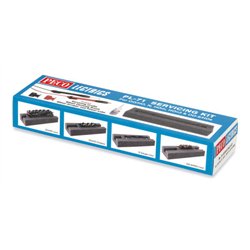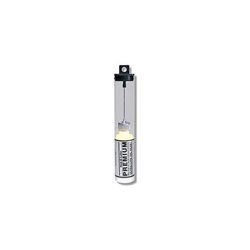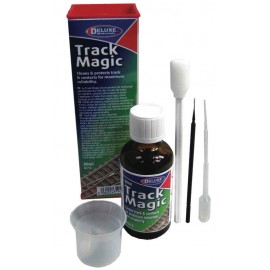Once the cockpit sub-assembly has been completed and painted there are a number of techniques that can be made to...
No products
Product successfully added to your shopping cart
There are 0 items in your cart. There is 1 item in your cart.
Search Tips
Christmas and New Year
We are dispatching orders every weekday apart from Christmas Day, Boxing Day and New Year's Day.
If you select next day delivery at checkout, please note deliveries are not made on public holidays or Sundays.
The shop in Sandown is open 23rd and 24th December, then closed from 25th December, reopening on 30th December.
How do I service my model railway locomotive?
Servicing your model railway locomotive is an essential part of maintaining its performance and longevity. Regular care ensures that it runs smoothly on your layout, avoids unnecessary wear, and looks its best. While servicing might seem daunting at first, it's straightforward with a bit of practice and the right tools.
Start by preparing a clean, well-lit workspace. Place a soft cloth or foam pad on the surface to protect both the locomotive and the table. Before you begin disassembly, consult the manufacturer's instructions or service sheet for your specific model. These documents often provide diagrams showing how parts fit together, making the process much easier.
Begin with a visual inspection. Check for any obvious issues, such as dirt or debris in the wheels, cracks in the body or loose components. Clean the wheels using a cotton bud dipped in isopropyl alcohol or a specialised track-cleaning fluid. Removing grime from the wheels is crucial as it ensures good electrical contact with the track. Similarly, examine the pickups (the parts that transfer power from the wheels to the motor) and clean them if they're dirty.
Next, focus on the motor and drivetrain. Carefully remove the body shell, taking note of how it's attached to avoid damaging clips or screws. Use a small, soft brush to dust off the motor and gears. Apply a tiny drop of oil to the bearings and axles – specialised model railway lubricants are ideal for this. Be sparing, as too much oil can attract dust and cause further problems. Avoid using household oils like WD-40, which can damage plastic components.
Check for wear on moving parts such as gears and couplings. If you notice any significant damage or wear, these parts may need replacing. Many manufacturers offer spares, and there are also third-party suppliers specialising in parts for older or rare models. While you have the locomotive open, inspect the wiring and connections to ensure they are secure and free from damage.
After reassembling the locomotive, test it on a clean section of track to ensure everything is working properly. If the engine stutters, struggles or runs noisily, revisit the servicing steps to address any missed issues. Regular servicing – perhaps once every six months, depending on usage – will keep your locomotive running as reliably as the day you bought it. With care and attention, your locomotive can provide years of enjoyment.
Click here to receive the tips weekly in your mailbox. You can unsubscribe at any time.










